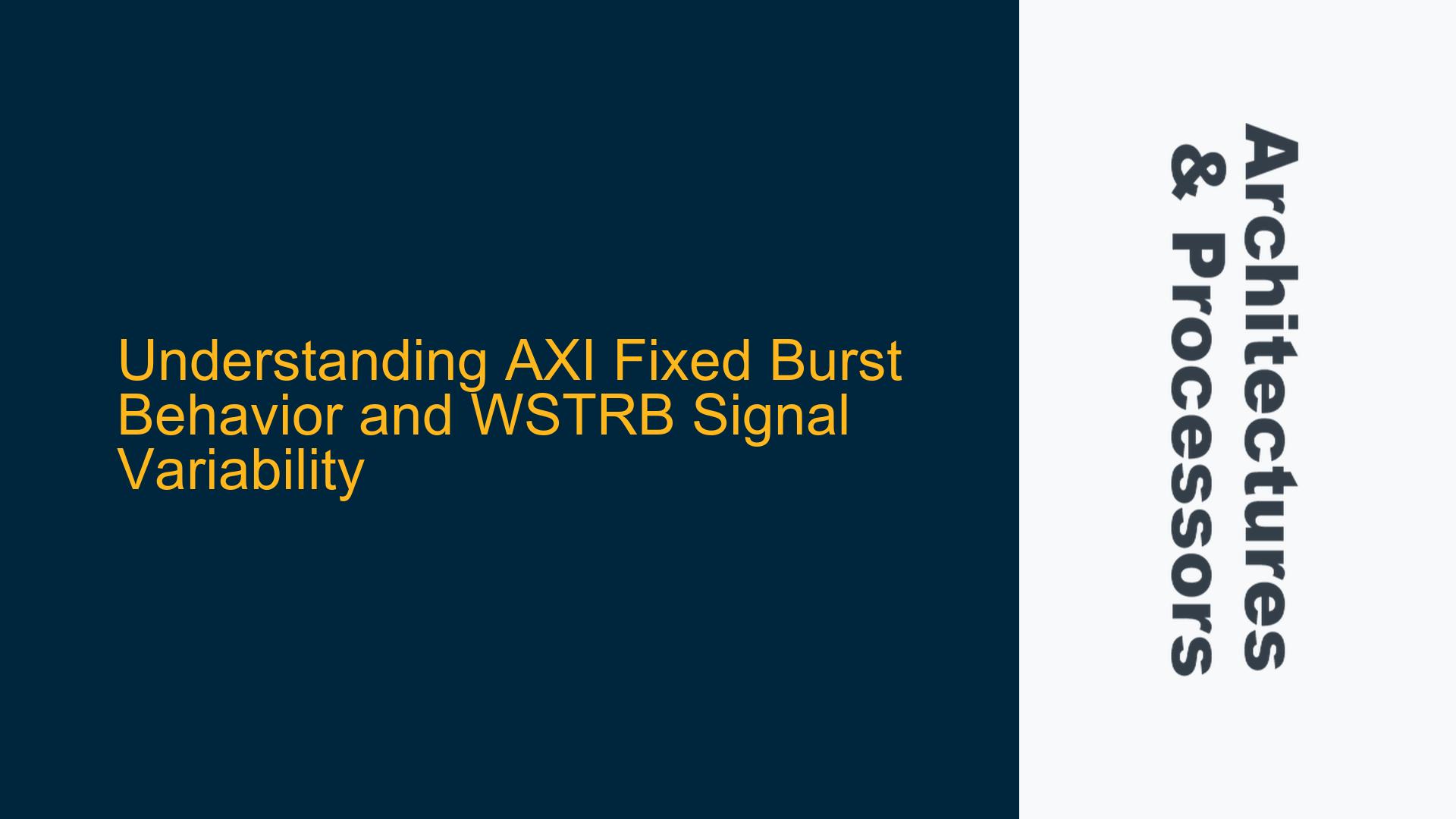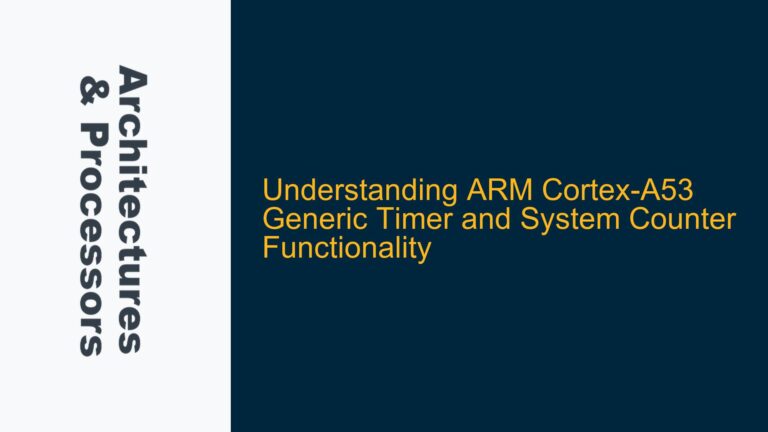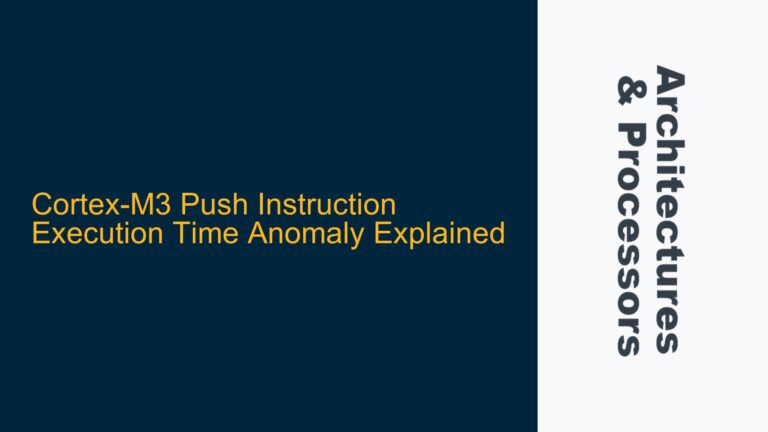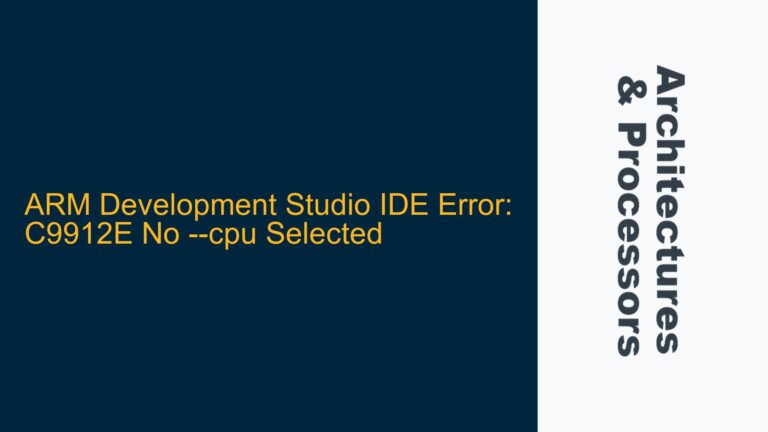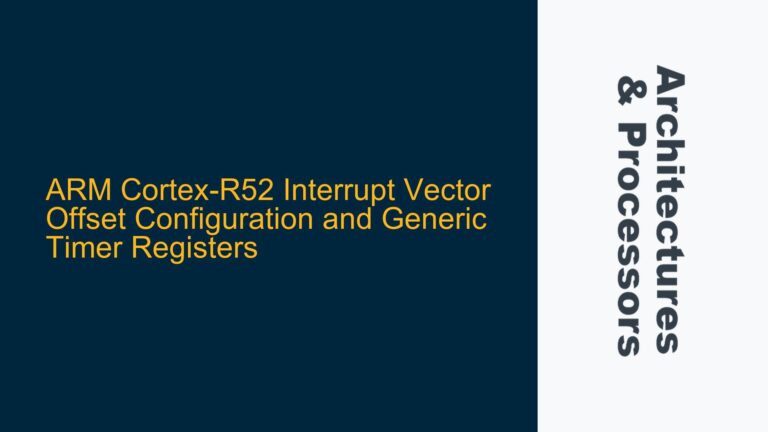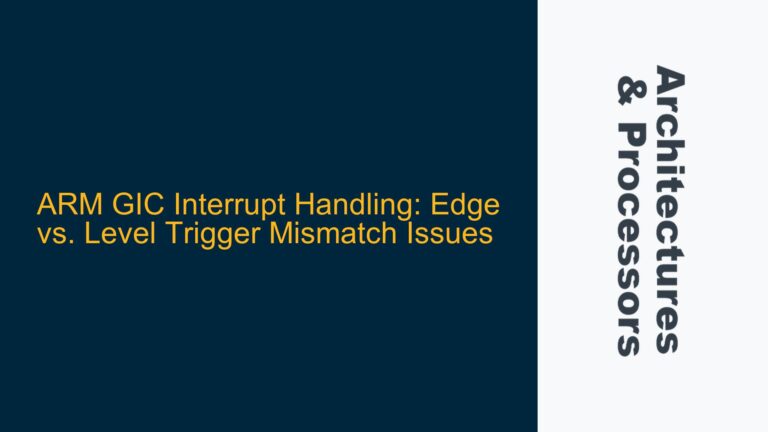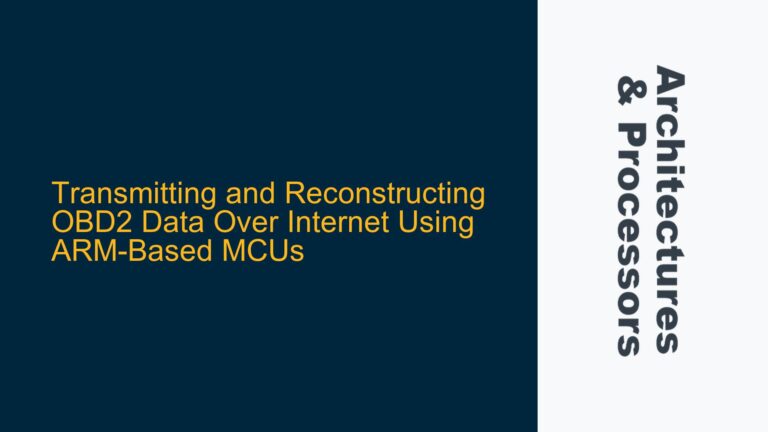AXI Fixed Burst Mechanism and WSTRB Signal Interpretation
The AXI (Advanced eXtensible Interface) protocol is a widely used on-chip communication standard for high-performance embedded systems. One of its key features is the ability to perform burst transfers, which allow multiple data transactions to occur in a single operation. Among the burst types supported by AXI, the FIXED burst type is particularly unique in its behavior. In a FIXED burst, the address remains constant for all beats in the burst, meaning that the same memory location is accessed repeatedly. However, the WSTRB (Write Strobe) signal, which indicates which bytes within the data bus are valid, can vary for each beat in the burst. This behavior can be counterintuitive, especially when compared to INCR (Incrementing) or WRAP (Wrapping) burst types, where both the address and WSTRB signals typically change.
The confusion arises from the interplay between the AWADDR (Address Write), AWSIZE (Write Size), and WSTRB signals. AWADDR and AWSIZE together define the byte lanes that can be used for the first transfer in a transaction. For FIXED bursts, these byte lanes remain constant across all beats in the burst. However, the WSTRB signal, which specifies which bytes are being used within those lanes, can change dynamically for each beat. This means that while the address and the range of valid byte lanes stay the same, the actual bytes being written can vary.
For example, consider a system with a 128-bit data bus, where AWADDR is set to 0x0 and AWSIZE is set to 0x2 (indicating a 32-bit transfer). If the burst type is FIXED and AWLEN (Write Length) is set to 0x3 (indicating 4 transfers), the valid byte lanes for all four transfers will be WDATA[31:0]. However, the WSTRB signal can take on different values for each transfer, such as 0x000F (all four bytes valid), 0x000A (bytes 0 and 2 valid), or 0x0006 (bytes 1 and 2 valid). This flexibility allows for fine-grained control over which bytes are written in each beat of the burst, even though the address remains fixed.
Misinterpretation of AXI Specification and Signal Behavior
The root cause of the confusion lies in the interpretation of the AXI specification, particularly the wording around the behavior of the WSTRB signal in FIXED bursts. The specification states that "the byte lanes that are valid are constant for all beats in the burst," which can lead to the assumption that the WSTRB signal must also remain constant. However, this is not the case. The WSTRB signal is independent of the burst type and can vary for each beat, even in FIXED bursts.
This misunderstanding can lead to several issues in system design and verification. For instance, a designer might assume that the WSTRB signal will remain constant for FIXED bursts and fail to account for scenarios where it changes. This could result in incorrect data being written to memory or unexpected behavior in the system. Additionally, verification engineers might overlook this nuance during testing, leading to undetected bugs in the hardware or firmware.
Another potential cause of confusion is the lack of clear examples in the AXI specification that illustrate the behavior of the WSTRB signal in FIXED bursts. While the specification provides detailed descriptions of the signals and their interactions, it does not always include practical examples that demonstrate how these signals behave in real-world scenarios. This can make it difficult for designers and engineers to fully grasp the implications of the specification, especially when dealing with edge cases or less common burst types like FIXED.
Implementing Correct WSTRB Handling in FIXED Bursts
To ensure correct handling of the WSTRB signal in FIXED bursts, designers and engineers must take a systematic approach to both design and verification. The first step is to thoroughly understand the AXI specification and the behavior of the WSTRB signal in different burst types. This includes recognizing that the WSTRB signal can vary for each beat in a FIXED burst, even though the address and valid byte lanes remain constant.
During the design phase, it is crucial to implement logic that correctly interprets the WSTRB signal for each beat in the burst. This logic must account for the possibility that the WSTRB signal can change dynamically, even in FIXED bursts. For example, if the system is designed to write specific bytes to a memory location, the logic must ensure that the correct bytes are written based on the WSTRB signal for each beat. This may involve masking or selecting specific bytes from the data bus based on the WSTRB value.
In the verification phase, it is important to create test cases that cover all possible variations of the WSTRB signal in FIXED bursts. This includes scenarios where the WSTRB signal changes for each beat, as well as cases where it remains constant. These test cases should be designed to verify that the system correctly handles the WSTRB signal and writes the expected data to memory. Additionally, the test cases should include edge cases, such as bursts with a single beat or bursts where the WSTRB signal is all zeros (indicating no valid bytes).
To further ensure correctness, designers and engineers can use formal verification techniques to prove that the logic handling the WSTRB signal behaves as expected under all conditions. Formal verification can help identify corner cases that might be missed during simulation-based testing and provide a higher level of confidence in the design.
Finally, it is important to document the behavior of the WSTRB signal in FIXED bursts and include this information in the system specification. This documentation should clearly explain that the WSTRB signal can vary for each beat in a FIXED burst and provide examples of how this behavior can be used in practice. By doing so, designers and engineers can avoid misunderstandings and ensure that the system is implemented correctly.
In conclusion, the behavior of the WSTRB signal in AXI FIXED bursts is a subtle but important aspect of the protocol that can lead to confusion if not properly understood. By carefully interpreting the AXI specification, implementing correct logic, and thoroughly verifying the design, designers and engineers can ensure that their systems handle FIXED bursts correctly and avoid potential issues.
